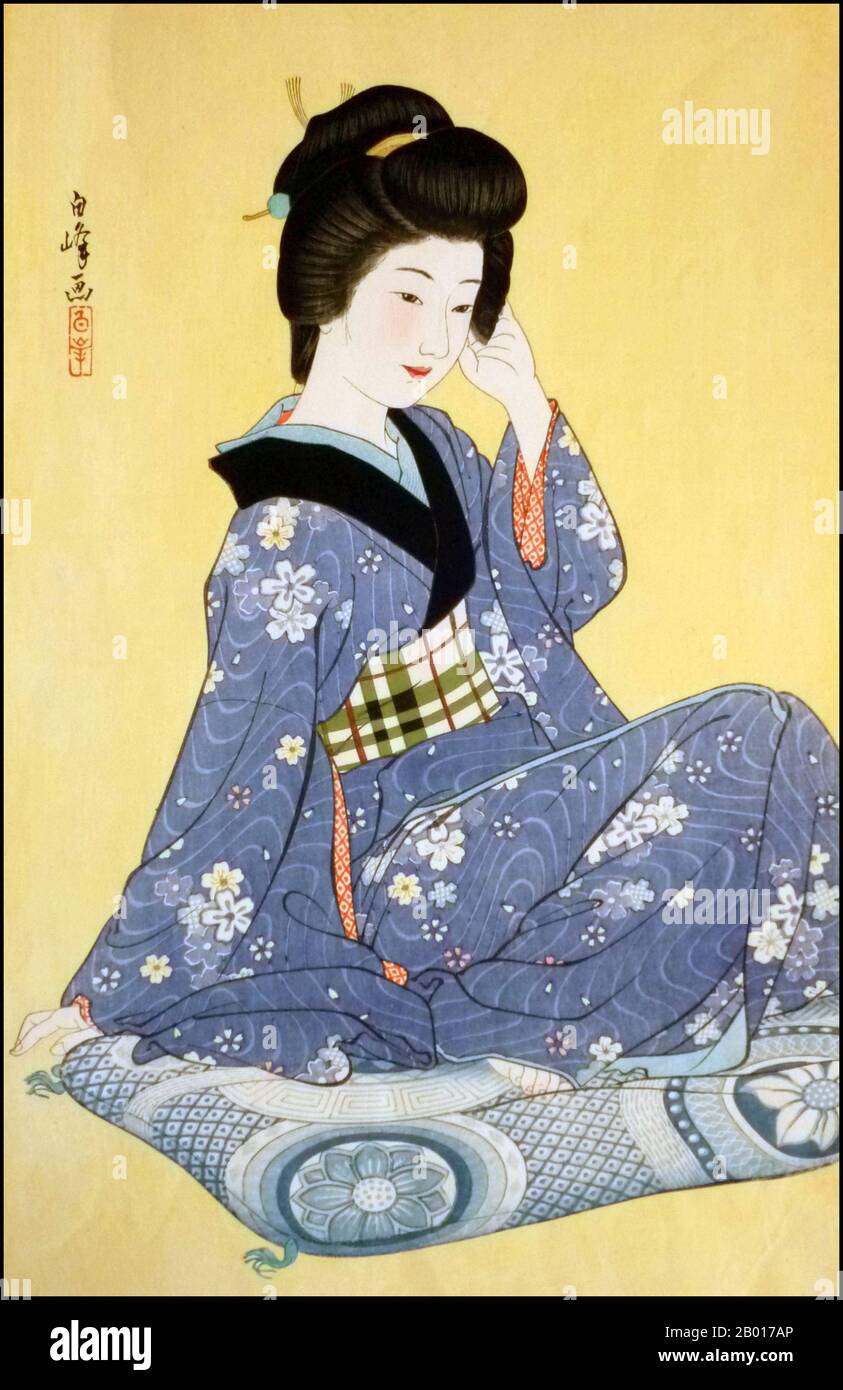Japan: 'Young Girl'. Ukiyo-e woodblock print by Hirano Hakuho (1879-1957), 1932. Hirano Hakuho was an artist of the Shin Hanga movement. Shin hanga ('new prints') was an art movement in early 20th-century Japan, during the Taishō and Shōwa periods, that revitalized traditional ukiyo-e art rooted in the Edo and Meiji periods (17th-19th century). The movement flourished from around 1915 to 1942, though it resumed briefly from 1946 through the 1950s. Inspired by European Impressionism, the artists incorporated Western elements such as the effects of light and the expression of individual moods.

Image details
Contributor:
CPA Media Pte Ltd / Alamy Stock PhotoImage ID:
2B017APFile size:
51.9 MB (1.2 MB Compressed download)Releases:
Model - no | Property - noDo I need a release?Dimensions:
3430 x 5289 px | 29 x 44.8 cm | 11.4 x 17.6 inches | 300dpiDate taken:
3 April 2011Photographer:
Pictures From HistoryMore information:
This image could have imperfections as it’s either historical or reportage.
Hirano Hakuho was an artist of the Shin Hanga movement. Shin hanga ('new prints') was an art movement in early 20th-century Japan, during the Taishō and Shōwa periods, that revitalized traditional ukiyo-e art rooted in the Edo and Meiji periods (17th–19th century). The movement flourished from around 1915 to 1942, though it resumed briefly from 1946 through the 1950s. Inspired by European Impressionism, the artists incorporated Western elements such as the effects of light and the expression of individual moods, but focused on strictly traditional themes of landscapes (fukeiga), famous places (meishō), beautiful women (bijinga), kabuki actors (yakusha-e), and birds and flowers (kachōga).